The AML/CTF Amendment Bill 2024 has officially passed both the Australian House of Representatives and Senate, marking a pivotal moment in the nation’s efforts to combat financial crime. This legislative milestone brings with it new obligations for businesses across a range of industries, requiring robust and independent identity verification (IDV) measures to ensure compliance.
As COO of IDVerse, I’ve seen firsthand how evolving regulations challenge organisations to innovate while safeguarding operational integrity. This article explores best practices for leveraging digital identity verification to meet these new standards.
Compliance is no longer a checkbox—it’s a strategy to protect businesses, build trust, and enable growth in an increasingly complex digital economy.
The new compliance mandate: What has changed?
The AML/CTF Amendment Bill 2024 significantly raises the bar for identity verification by mandating the use of “independent and reliable data sources” to confirm a person’s identity. This shift underscores two critical realities:
- The rising sophistication of fraud: Cybercriminals are employing advanced tactics, including synthetic identities, deepfake technologies, and the misuse of compromised personally identifiable information (PII). Businesses relying solely on data-based identity checks are increasingly vulnerable.
- Identity as the cornerstone of compliance: Accurate identity verification safeguards against financial crime, protects customers, and builds trust. Without robust systems, organisations face heightened risks of non-compliance, fraud, and reputational damage.
The challenge is clear: Businesses must adopt IDV systems that are both compliant with the new standards and resilient against emerging threats.
Best practices for a new landscape
1. Embrace multi-layered verification
Compliance requires a comprehensive approach to identity verification, integrating multiple technologies to ensure accuracy and security:
- Document verification: Validate the authenticity of government-issued identity documents using advanced fraud detection tools.
- Biometric verification: Match a live facial scan with the image on the identity document, ensuring the person presenting the document is its rightful owner.
- Liveness detection: Confirm the individual is physically present during the verification process, mitigating risks of spoofing through static images or videos.
- Deepfake detection: Deploy AI-driven tools to identify and block attempts using generative AI technologies to create fraudulent representations.
Layering these technologies provides a robust defence against fraud while ensuring compliance with the AML/CTF framework.
2. Implement risk-based approaches
The new AML/CTF standards emphasize tailoring verification processes to the assessed risk level of each customer:
- Conduct comprehensive risk assessments to classify customers based on factors such as geography, industry, and political exposure.
- Apply enhanced due diligence (EDD) for high-risk individuals, including additional verification measures and ongoing monitoring.
- Regularly reassess risk profiles to account for changing circumstances, ensuring compliance remains dynamic and responsive.
This approach ensures businesses allocate resources effectively, balancing operational efficiency with regulatory rigor.

3. Prioritise automation & scalability
Manual processes can no longer keep pace with the volume and complexity of modern compliance requirements. Businesses must invest in automation to ensure efficiency and scalability:
- AI-powered fraud detection: Utilize machine learning models to identify anomalies in documents, biometrics, and user behavior.
- Real-time processing: Implement systems that provide instant verification results, reducing friction in customer onboarding.
- Scalable Infrastructure: Design solutions that can accommodate increased verification demand, particularly for high-growth sectors like virtual assets or real estate.
Automation not only enhances compliance but also supports seamless customer experiences.
4. Build inclusive & bias-free systems
In today’s global economy, inclusivity is as important as technical adequacy. IDV systems should:
- Use non-discriminatory AI to eliminate biases related to race, gender, and age.
- Ensure accessibility for individuals across diverse demographics and geographies.
- Communicate verification processes transparently, building trust with users.
Inclusive systems create positive user experiences while addressing ethical and regulatory concerns.
5. Maintain an audit-ready compliance framework
Accountability and traceability are fundamental to the new AML/CTF framework. To remain audit-ready:
- Keep comprehensive records of all verification activities, including audit trails for compliance reviews.
- Integrate IDV solutions with compliance management platforms for centralised reporting.
- Regularly update verification protocols to align with evolving regulations and industry best practices.
An audit-ready approach strengthens internal governance while ensuring readiness for regulatory scrutiny.
Leadership’s role in driving compliance innovation
As business leaders, our role is not only to respond to regulatory changes but to anticipate and shape how our organisations adapt. The AML/CTF Amendment Bill 2024 is a reminder that compliance is not a static checkbox—it is a dynamic commitment to trust, security, and operational excellence.
Digital identity verification is no longer optional; it is foundational. By implementing best practices and leveraging advanced technologies, businesses can turn compliance into a competitive advantage, safeguarding themselves while empowering customers to engage with confidence.
As we move forward, let us embrace the opportunity to lead with innovation, integrity, and inclusivity. The future of compliance starts with us.
About the post:
Images and videos are generative AI-created. Image prompt: An Australian CEO looking out from his high rise office window over downtown Sydney and the ocean beyond. Tools: Midjourney, Luma.
About the author:
Josh Read is Chief Operating Officer at IDVerse. He has over 25 years of leadership experience in technology organisations including Equifax, KPMG Australia, Telstra Enterprise and Government, and Yellowfin Business Intelligence International. As COO, Josh supports and directs the global expansion of the company, building optimised business processes for IDVerse to become the global partner of choice for IDV and compliance.


